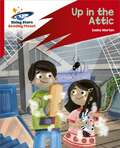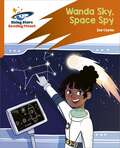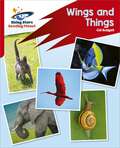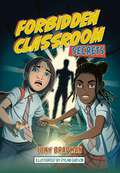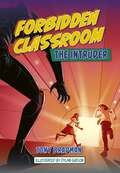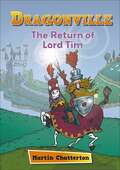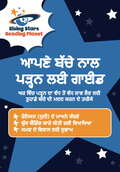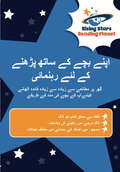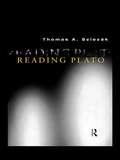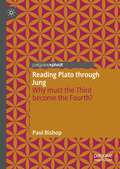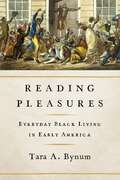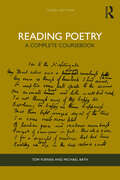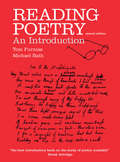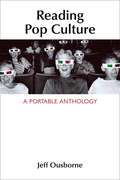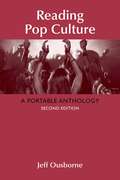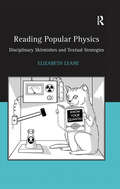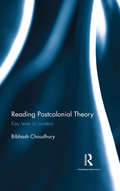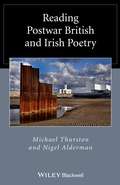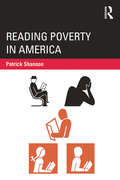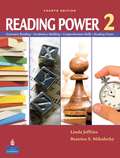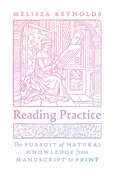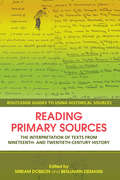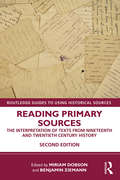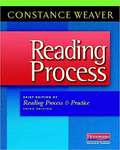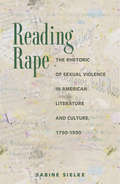- Table View
- List View
Reading Planet: Rocket Phonics – Target Practice – Up in the Attic – Red A
by Abigail SteelZak and Yazz are on a quest. They are looking for lost things in Nan's attic. What will they find up there? (Letter-sounds featured: y z zz qu /z/ -s) Up in the Attic is part of the Rocket Phonics teaching and learning programme from Reading Planet. Rocket Phonics ensures that every child achieves phonics success. This fully-decodable Target Practice reading book provides focused practice of a small group of letter-sounds. The book also includes useful notes and activities to support reading in school and at home as well as comprehension questions to check understanding. Reading age: 4-5/Reception
Reading Planet: Rocket Phonics – Target Practice – Wanda Sky, Space Spy – Orange
by Zoe ClarkeWanda Sky lives on Space Station 4 and is in charge of constellations. When some of the stars go missing in her favourite constellation, will she be able to use her spy skills and solve the mystery? Find out in this exciting comic-strip story! (Letter-sounds featured: /o/ (w)a /sh/ ssi ci ti) Wanda Sky, Space Spy is part of the Rocket Phonics teaching and learning programme from Reading Planet. Rocket Phonics ensures that every child achieves phonics success. This fully-decodable Target Practice reading book provides focused practice of a small group of letter-sounds. The book also includes useful notes and activities to support reading in school and at home as well as comprehension questions to check understanding.Reading age: 5-6/Year 1
Reading Planet: Rocket Phonics – Target Practice – Wings and Things – Red B
by Abigail SteelThings can have wings, fins, shells, trunks and tails. What animals and objects can you spot with these special features? (Letter-sounds featured: ch sh th ng ai) Wings and Things is part of the Rocket Phonics teaching and learning programme from Reading Planet. Rocket Phonics ensures that every child achieves phonics success. This fully-decodable Target Practice reading book provides focused practice of a small group of letter-sounds. The book also includes useful notes and activities to support reading in school and at home as well as comprehension questions to check understanding. Reading age: 4-5/Reception
Reading Planet: Secrets
by Tony BradmanWelcome to Rockhead Primary, a school so ordinary even the teachers think it's boring. But things start to change when a builder knocks down an internal wall and reveals something totally weird ... Two Year 6 pupils - Verna Lee and Jamie Ballard - join forces to investigate a whole series of secrets. What terrifying event took place on December 21st 1983? Why has the school caretaker suddenly started to behave strangely? And what is really inside the Forbidden Classroom? The answers to all these questions are inside this book. Open it ... if you dare! Forbidden Classroom: Secrets is part of the Astro range from Rising Stars Reading Planet. Astro books are ideal for struggling and reluctant readers aged 7-11. Each book is dual-banded so that children can improve their fluency whilst enjoying exciting fiction and non-fiction relevant to their age. Reading Planet books have been carefully levelled to support children in becoming fluent and confident readers. Each book features useful notes and questions to support reading at home and develop comprehension skills. Interest age: 8-9 Reading age: 7-8 years
Reading Planet: The Intruder
by Tony BradmanWelcome to Rockhead Primary, a school so ordinary even the teachers think it's boring. But things start to change when a builder knocks down an internal wall and reveals something totally weird... Now the school has been invaded by an invisible intruder from another galaxy. Verna Lee and Jamie Ballard investigate, but our dynamic Year 6 duo are stumped by the alien's antics. Can they track it down and save the human race from a terrible fate? Can they even save themselves? The answers to all these questions are inside this book. Open it...if you dare! Forbidden Classroom: The Intruder is part of the Astro range from Rising Stars Reading Planet. Astro books are ideal for struggling and reluctant readers aged 7-11. Each book is dual-banded so that children can improve their fluency whilst enjoying exciting fiction and non-fiction relevant to their age. Reading Planet books have been carefully levelled to support children in becoming fluent and confident readers. Each book features useful notes and questions to support reading at home and develop comprehension skills. Interest age: 9-10 Reading age: 7-8 years
Reading Planet: The Return Of Lord Tim
by Martin ChattertonDragonville! The best spot in the Kingdom of Pamelot! Things in Pamelot are better than they have ever been. And best of all, there are no dragons ... Or that's what people think ... until Zig and Zag of Unk's Pest Control see something in the tunnels under Dragonville Castle ... Will the Unks finally meet their match against the beastly Beezer? Can Dragonville be saved from a full-scale dragon attack? And has anyone seen Lord Tim?! In graphic novel format, Dragonville: The Return of Lord Tim is part of the Astro range from Rising Stars Reading Planet. Astro books are ideal for struggling and reluctant readers aged 7-11. Each book is dual-banded so that children can improve their fluency whilst enjoying exciting fiction and non-fiction relevant to their age. Astro books for Mercury/Purple band are also highly-decodable so ideal for extra phonics practice. Reading Planet books have been carefully levelled to support children in becoming fluent and confident readers. Each book features useful notes and questions to support reading at home and develop comprehension skills. Interest age: 7-8 Reading age: 6-7 years
Reading Planet: [Punjabi] Guide to Reading with your Child (Rising Stars Reading Planet)
by Abigail SteelThe Reading Planet Guide to Reading supports parents to read at home with their child. This handy guide explains Phonics and book banding, and includes tips on how to develop comprehension skills and what to write in a reading record.
Reading Planet: [Urdu] Guide to Reading with your Child (Rising Stars Reading Planet)
by Abigail SteelThe Reading Planet Guide to Reading supports parents to read at home with their child. This handy guide explains Phonics and book banding, and includes tips on how to develop comprehension skills and what to write in a reading record.
Reading Plato
by Thomas A. SzlezákReading Plato offers a concise and illuminating insight into the complexities and difficulties of the Platonic dialogues, providing an invaluable text for any student of Plato's philosophy.Taking as a starting point the critique of writing in the Phaedrus -- where Socrates argues that a book cannot choose its reader nor can it defend itself against misinterpretation -- Reading Plato offers solutions to the problems of interpreting the dialogues. In this ground-breaking book, Thomas A. Szlezak persuasively argues that the dialogues are designed to stimulate philosophical enquiry and to elevate philosophy to the realm of oral dialectic.
Reading Plato through Jung: Why must the Third become the Fourth?
by Paul BishopThis book examines the Jungian imperative that the Third must become the Fourth through the lens of Carl Jung’s complex reception of Plato. While in psychoanalytic discourse the Third is typically viewed as an agent that brings about healing, the author highlights that, in the case of Jung, an early emphasis on the Third as the “transcendent function” gave way to an increasing insistence on the importance of the Fourth. And yet, he asks, why must “the Third become the Fourth”? Paul Bishop begins with a survey of work on Jung’s relation to Plato, before turning to Jung’s readings of the Timaeus and Black Books, as well as Goethe’s Faust II and Nietzsche’s Zarathustra. He proceeds to unpick Jung’s statements on the Third and the Fourth though a compelling analysis of how Jung draws upon religious and alchemical traditions, Pythagorean numerology, his own dream-like experiences and Plato’s cosmology. This book will appeal to practitioners and to scholars working in the history of ideas, psychoanalysis, philosophy, and psychoanalytic theory.
Reading Pleasures: Everyday Black Living in Early America (New Black Studies Series)
by Tara A. BynumIn the early United States, a Black person committed an act of resistance simply by reading and writing. Yet we overlook that these activities also brought pleasure. Tara A. Bynum tells the compelling stories of four early American writers who expressed feeling good despite living while enslaved or only nominally free. The poet Phillis Wheatley delights in writing letters to a friend. Ministers John Marrant and James Albert Ukawsaw Gronniosaw memorialize their love for God. David Walker’s pamphlets ask Black Americans to claim their victory over slavery. Together, their writings reflect the joyous, if messy, humanity inside each of them. This proof of a thriving interior self in pursuit of good feeling forces us to reckon with the fact that Black lives do matter. A daring assertion of Black people’s humanity, Reading Pleasures reveals how four Black writers experienced positive feelings and analyzes the ways these emotions served creative, political, and racialized ends.
Reading Poetry: A Complete Coursebook
by Tom Furniss Michael BathReading Poetry offers a comprehensive and accessible guide to the art of reading poetry. Discussing more than 200 poems by more than 100 writers, ranging from ancient Greece and China to the twenty-first century, the book introduces readers to the skills and the critical and theoretical awareness that enable them to read poetry with enjoyment and insight. This third edition has been significantly updated in response to current developments in poetry and poetic criticism, and includes many new examples and exercises, new chapters on ‘world poetry’ and ‘eco-poetry’, and a greater emphasis throughout on American poetry, including the impact traditional Chinese poetry has had on modern American poetry. The seventeen carefully staged chapters constitute a complete apprenticeship in reading poetry, leading readers from specific features of form and figurative language to larger concerns with genre, intertextuality, Caribbean poetry, world poetry, and the role poetry can play in response to the ecological crisis. The workshop exercises at the end of each chapter, together with an extensive glossary of poetic and critical terms, and the number and range of poems analysed and discussed – 122 of which are quoted in full – make Reading Poetry suitable for individual study or as a comprehensive, self-contained textbook for university and college classes.
Reading Poetry: An Introduction
by Tom Furniss Michael BathReading Poetry offers a comprehensive and accessible guide to the art of reading poetry. Successive chapters introduce key skills and critical or theoretical issues, enabling users to read poetry with enjoyment, insight and an awareness of the implications of what they are doing. This new edition includes a new chapter on ‘Post-colonial Poetry’, a substantial increase in the number of end-of-chapter interactive exercises, and a comprehensive Glossary of poetic terms. Not just an add-on, the Glossary works as a key resource for the structuring of particular topics in any individual teaching or learning programme. Many of the exercises and interactive discussions develop not only the skills of competent close reading but also the necessary confidence and experience in locating historical and other contextual information through library or internet searches. The aim is to enhance readers' literary and scholarly competence – and to make it fun!
Reading Pop Culture: A Portable Anthology
by Jeffrey OusborneReading Pop Culture: A Portable Anthology is a current, compact, inexpensive collection that taps into students' passionate engagement with popular culture in order to help them to become better writers. Its focus on themes of consumption, advertising, identity, technology, television, movies, and new media prompts composition students to think and write about issues they care about. This volume in the popular Bedford/St. Martin's series of Portable Anthologies and Guides offers a trademark combination of high quality and great value.
Reading Pop Culture: A Portable Anthology (Second Edition)
by Jeff OusborneReading Pop Culture: A Portable Anthology, Second Edition, taps into students' interest in pop culture while addressing their need for instruction in critical analysis. <P><P>It combines currency, quality, brevity, and value in a collection of essays and images for first-year or themed writing courses. It presents a variety of voices in terms of gender, sexuality, race, and culture, as well as in topics and time periods. <P><P>It also features more variety of reading selections, including academic essays from scholars and articles published in popular media outlets from emerging writers.
Reading Popular Physics: Disciplinary Skirmishes and Textual Strategies
by Elizabeth LeaneReading Popular Physics is a valuable contribution to our understanding of the nature and implications of physics popularizations. A literary critic trained in science, Elizabeth Leane treats popular science writing as a distinct and significant genre, focusing particularly on five bestselling books: Stephen Hawking's A Brief History of Time, Steven Weinberg's The First Three Minutes, James Gleick's Chaos, M. Mitchell Waldrop's Complexity, and Gary Zukav's The Dancing Wu Li Masters. Leane situates her examination of the texts within the heated interdisciplinary exchanges known as the 'Science Wars', focusing specifically on the disputed issue of the role of language in science. Her use of literary analysis reveals how popular science books function as sites for 'disciplinary skirmishes' as she uncovers the ways in which popularizers of science influence the public. In addition to their explicit discussion of scientific concepts, Leane argues, these authors employ subtle textual strategies that encode claims about the nature and status of scientific knowledge - claims that are all the more powerful because they are unacknowledged. Her book will change the way these texts are read, offering readers a fresh perspective on this highly visible and influential genre.
Reading Postcolonial Theory: Key texts in context
by Bibhash ChoudhuryThis book is an essential introduction to significant texts in postcolonial theory. It looks at seminal works in the ‘moments of their making’ and delineates the different threads that bind postcolonial studies. Each chapter presents a comprehensive discussion of a major text and contextualises it in the wake of contemporary themes and debates. The volume: Studies major texts by foremost scholars — Edward W. Said, Chinua Achebe, Albert Memmi, Gayatri Chakravorty Spivak, Paul Carter, Homi Bhabha, Frantz Fanon, Ashis Nandy, Robert J. C. Young, Ngugi wa Thiongo, and Sara Suleri Shifts focus from colonial experience to underlying principles of critical engagement Uses accessible, jargon-free language Focused, engaging and critically insightful, this book will be indispensable to students and scholars of literary and cultural studies, comparative literature, and postcolonial studies.
Reading Postwar British and Irish Poetry (Wiley Blackwell Reading Poetry #16)
by Michael Thurston Nigel AldermanCombining detailed explorations of both mainstream and experimental poets with a clear historical and literary overview, Reading Postwar British and Irish Poetry offers readers at all levels an ideal guide to the rich body of poetic works published in Britain and Ireland over the last half-century. Features detailed discussions of individual poems that are widely available in anthologies and selected poems volumes Pays explicit attention to how to read the poems, focusing on language and form and the institutional conditions of literary possibility in which poets worked Includes poets of all types and styles from throughout the post-war period, including canonical and mainstream poets alongside experimental poets, women, and poets of color
Reading Poverty in America
by Patrick ShannonIn this book Shannon’s major premise remains the same as his 1998 Reading Poverty: Poverty has everything to do with American public schooling–how it is theorized, how it is organized, and how it runs. Competing ideological representations of poverty underlie school assumptions about intelligence, character, textbook content, lesson formats, national standards, standardized achievement tests, and business/school partnerships and frame our considerations of each. In this new edition, Shannon provides an update of the ideological struggles to name and respond to poverty through the design, content, and pedagogy of reading education, showing how, through their representations and framing, advocates of liberal, conservative, and neoliberal interpretations attempt the ideological practice of teaching the public who they are, what they should know, and what they should value about equality, civic society, and reading. For those who decline these offers, Shannon presents radical democratic interpretations of the relationship between poverty and reading education that position the poor, the public, students, and teachers as agents in redistribution of economic, cultural, and political capital in the United States.
Reading Power 2 (Fourth Edition)
by Beatrice S. Mikulecky Linda JeffriesReading Power 2 is a new and updated edition of the successful student-centered reading skills textbook Reading Power. Its unique structure, featuring four parts to be used concurrently, allows low-intermediate-level students (with a 600-word vocabulary) to develop the multiple sills and strategies involved in the reading process. Overview Extensive Reading helps students to build reading fluency, broaden knowledge of vocabulary and collocation, and gain confidence. Vocabulary Building offers strategies for independent vocabulary learning such as dictionary work, guessing meaning from context, and learning how words work in sentences. Comprehension Skills teaches reading skills such as recognizing words and phrases, scanning for information, and making inferences. Reading Faster builds awareness of reading speed, provides strategies and exercises for increasing speed, and offers charts for tracking progress. New to the Fourth Edition An updated Extensive Reading section with a unit on fiction and non-fiction reading, more activities for evaluating student progress, and a revised suggested reading list Enhanced vocabulary features including new "Focus on Vocabulary" exercises and an expanded Vocabulary Building section There is also a Teacher Guide with Answer Key and a Test Booklet for Reading Power 2. The Reading Power series also includes: Basic Reading Power 1 (Third Edition): Beginning Reading Power 2 (4th Edition): Intermediate More Reading Power 3: High-Intermediate Advanced Reading Power 4: Advanced
Reading Practice: The Pursuit of Natural Knowledge from Manuscript to Print
by Melissa ReynoldsThrough portraits of readers and their responses to texts, Reading Practice reconstructs the contours of the knowledge economy that shaped medicine and science in early modern England. Reading Practice tells the story of how ordinary people grew comfortable learning from commonplace manuscripts and printed books, such as almanacs, medical recipe collections, and herbals. From the turn of the fifteenth century to the close of the sixteenth century, these were the books English people read when they wanted to attend to their health or understand their place in the universe. Before then, these works had largely been the purview of those who could read Latin. Around 1400, however, medical and scientific texts became available in Middle English while manuscripts became less expensive. These vernacular manuscripts invited their readers into a very old and learned conversation: Hippocrates and Galen weren’t distant authorities whose word was law, they were trusted guides, whose advice could be excerpted, rearranged, recombined, and even altered to suit a manuscript compiler’s needs. This conversation continued even after the printing press arrived in England in 1476. Printers mined manuscripts for medical and scientific texts that they would publish throughout the sixteenth century, though the pressures of a commercial printing market encouraged printers to package these old texts in new ways. Without the weight of authority conditioning their reactions and responses to very old knowledge, and with so many editions of practical books to choose from, English readers grew into confident critics and purveyors of natural knowledge in their own right. Melissa Reynolds reconstructs shifting attitudes toward medicine and science over two centuries of seismic change within English culture, attending especially to the effects of the Reformation on attitudes toward nature and the human body. Her study shows how readers learned to be discerning and selective consumers of knowledge gradually, through everyday interactions with utilitarian books.
Reading Primary Sources: The Interpretation of Texts from Nineteenth and Twentieth Century History (Routledge Guides to Using Historical Sources)
by Benjamin Ziemann Miriam DobsonHow does the historian approach primary sources? How do interpretations differ? How can they be used to write history? Reading Primary Sources goes a long way to providing answers for these questions. In the first part of this unique volume, the chapters give an overview of both traditional and new methodological approaches to the use of sources, analyzing the way that these have changed over time. The second part gives an overview of twelve different types of written sources, including letters, opinion polls, surveillance reports, diaries, novels, newspapers, and dreams, taking into account the huge expansion in the range of written primary sources used by historians over the last thirty years. This book is an up-to-date introduction into the historical context of these different genres, the ways they should be read, the possible insights and results these sources offer and the pitfalls of their interpretation. All of the chapters push the reader beyond a conventional understanding of source texts as mere "reflections" of a given reality, instead fostering an understanding of how each of the various genres has to be seen as a medium in its own right. Taking examples of sources from around the globe, and also including a student-friendly further reading section, this is the perfect companion for every student of history who wants to engage with sources.
Reading Primary Sources: The Interpretation of Texts from Nineteenth and Twentieth Century History (Routledge Guides to Using Historical Sources)
by Miriam DobsonNow in its second edition, Reading Primary Sources explores the varied traditions in source criticism and, through specific examples, illustrates how primary sources can be read and used in historical research. Part I of this two-part volume begins by establishing the reader’s understanding of source criticism with an overview of both traditional and new methodological approaches to the use of primary documents. Taking into account the huge expansion in the range of primary sources used by historians, Part II includes chapters on surveillance reports, testimony and court files, in addition to more traditional genres such as letters, memoranda, diaries, novels, newspapers, political speeches and autobiography. For the new edition, each chapter now includes a checklist that suggests an easy-to-follow sequence of steps for interpreting a specific source genre, enabling students to understand how the sources should be read, what they have to offer, and the pitfalls of their interpretation. In addition to new discussions about the availability of digitised source materials, a new chapter on social surveys unlocks the potential of these widely used primary sources. Taking examples of sources from many European countries and the United States, and providing up-to-date information on the most widely used textual sources, this book is the perfect companion for every student of history who wants to engage with primary sources.
Reading Process: Brief Edition Of Reading Process And Practice
by Constance WeaverThe Brief Edition of Constance Weaver's classic Reading Process & Practice begins with the seemingly simple question "What is reading, anyway? What is the essence of the reading process itself?" With so many competing, often antithetical interpretations, teachers need an answer they can trust and put to use. Connie Weaver knows the research and her book is designed to help teachers develop their own research-based definition of reading. <p><p> Written in clear, concise language, Reading Process, Brief Edition, is still comprehensive. It takes the chapters from the third edition of Reading Process & Practice that explore the reading process, miscue analysis, and supporting struggling readers, combining them with features ideal for preservice, post-graduate, and in-service learning. <p> To answer "What is reading?" we must examine how readers interact with texts in normal settings. To learn what this research says, we can trust Connie Weaver and Reading Process, Brief Edition. It remains the essential guide for teachers who want an understanding of reading around which they can build effective practices.
Reading Rape: The Rhetoric of Sexual Violence in American Literature and Culture, 1790-1990
by Sabine SielkeReading Rape examines how American culture talks about sexual violence and explains why, in the latter twentieth century, rape achieved such significance as a trope of power relations. Through attentive readings of a wide range of literary and cultural representations of sexual assault--from antebellum seduction narratives and "realist" representations of rape in nineteenth-century novels to Deliverance, American Psycho, and contemporary feminist accounts--Sabine Sielke traces the evolution of a specifically American rhetoric of rape. She considers the kinds of cultural work that this rhetoric has performed and finds that rape has been an insistent figure for a range of social, political, and economic issues. Sielke argues that the representation of rape has been a major force in the cultural construction of sexuality, gender, race, ethnicity, class, and indeed national identity. At the same time, her acute analyses of both canonical and lesser-known texts explore the complex anxieties that motivate such constructions and their function within the wider cultural imagination. Provoked in part by contemporary feminist criticism, Reading Rape also challenges feminist positions on sexual violence by interrogating them as part of the history in which rape has been a convenient and conventional albeit troubling trope for other concerns and conflicts. This book teaches us what we talk about when we talk about rape. And what we're talking about is often something else entirely: power, money, social change, difference, and identity.
